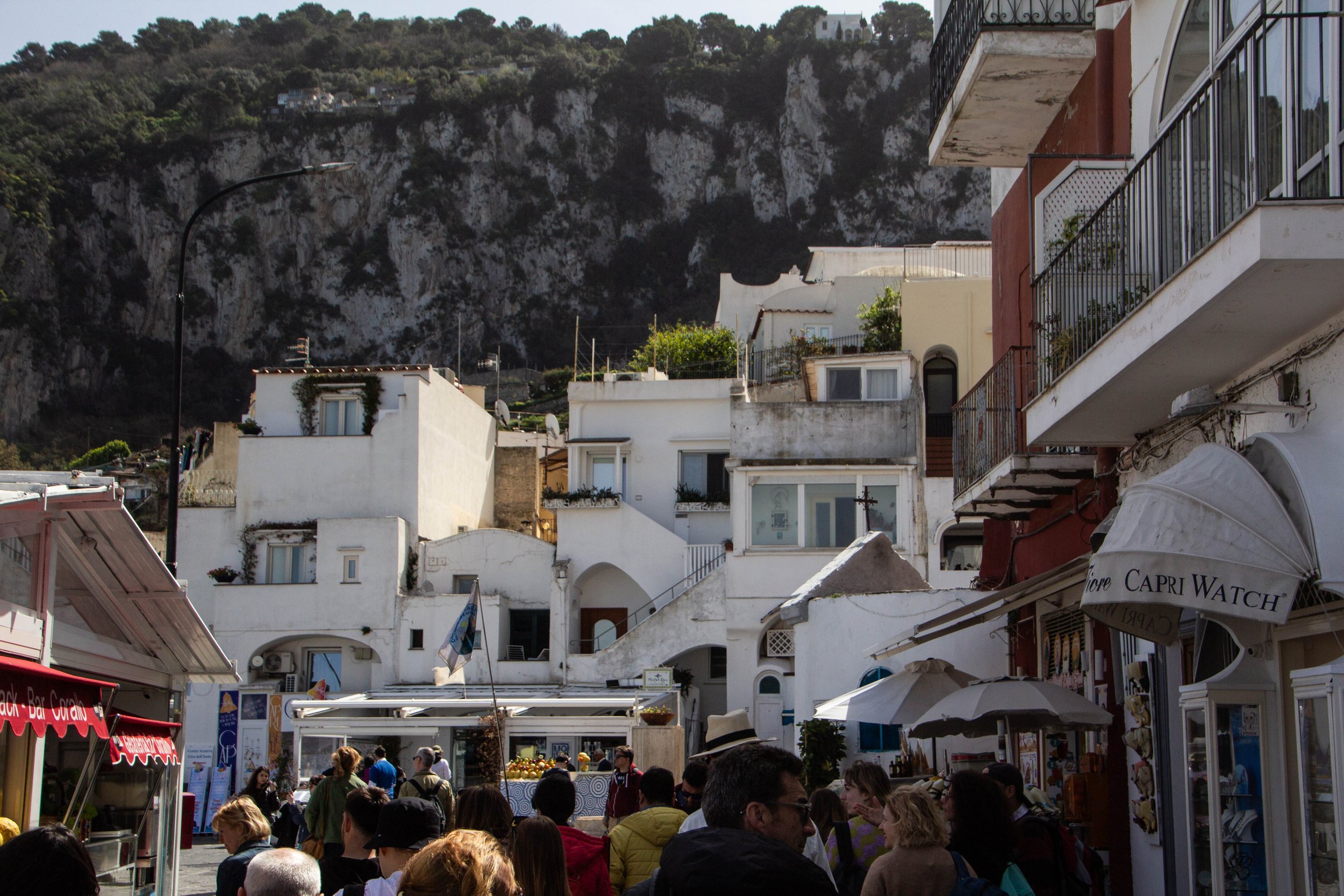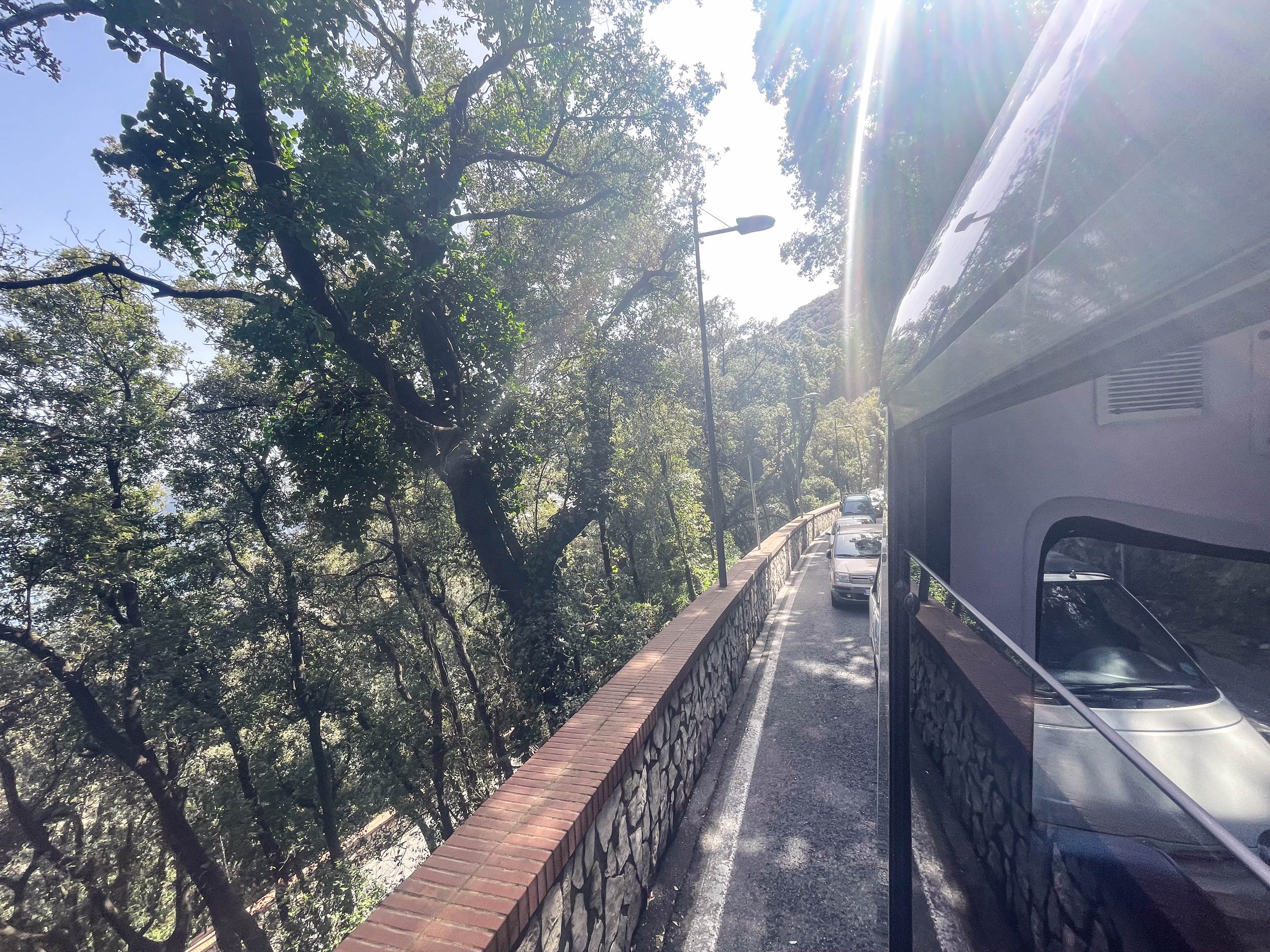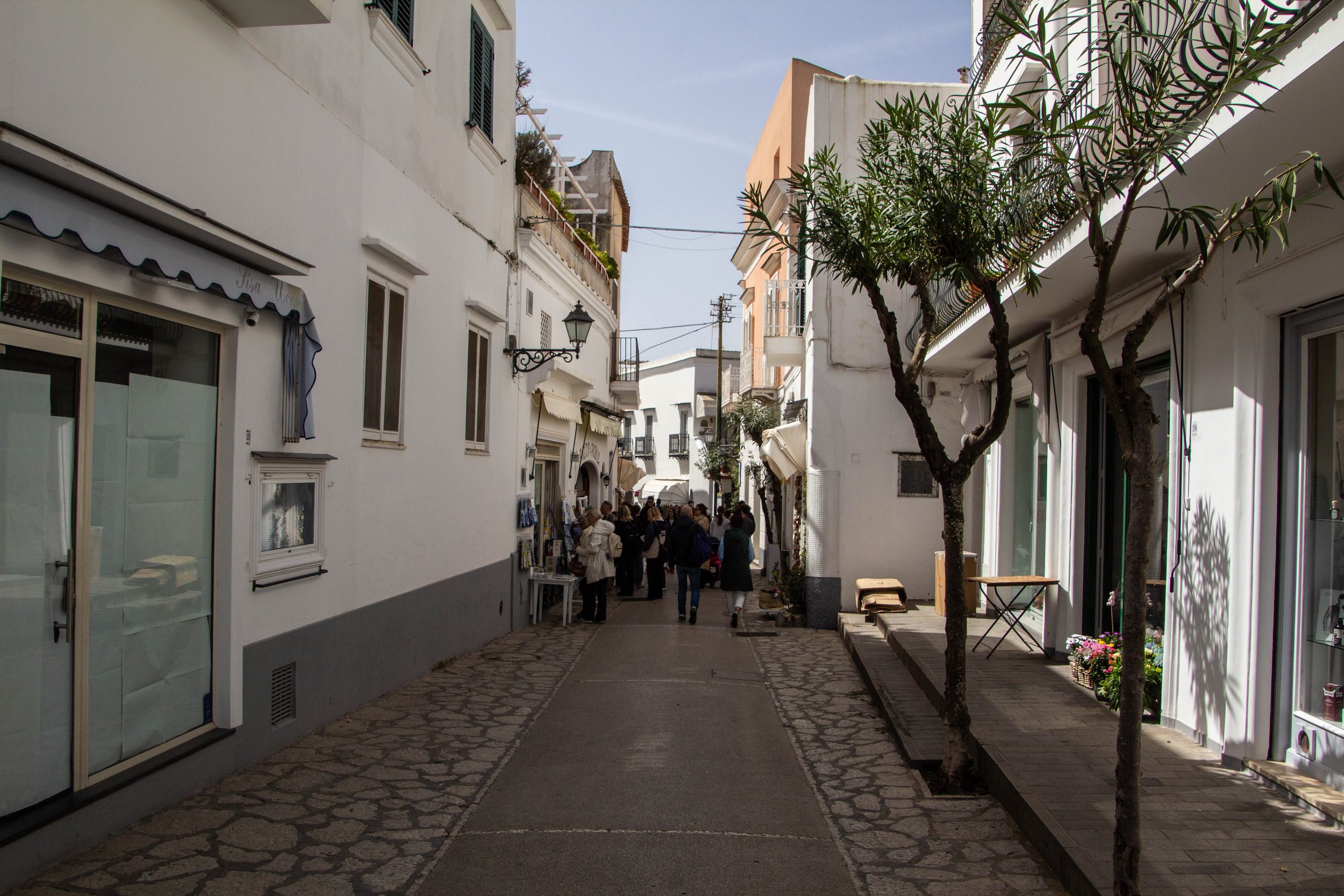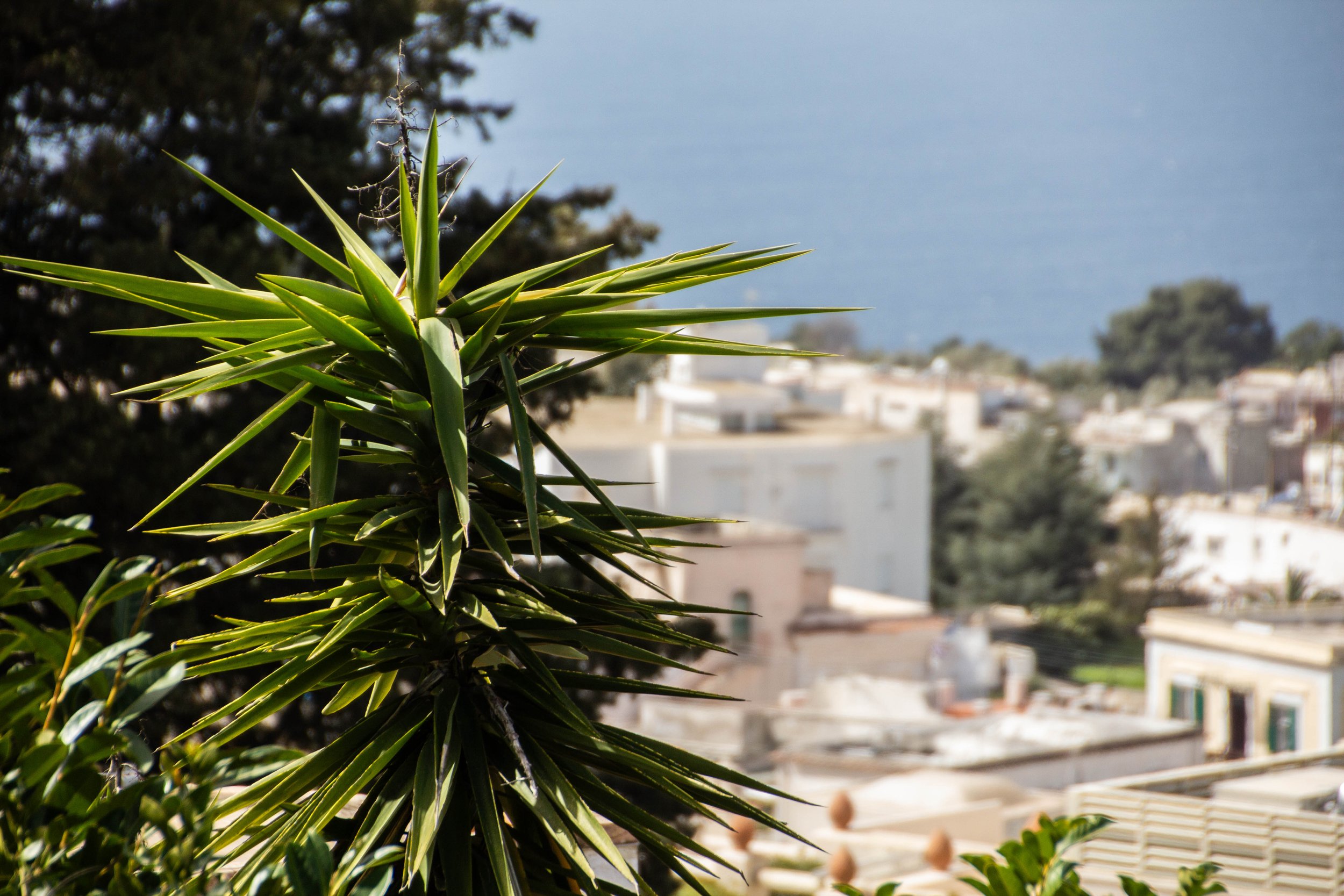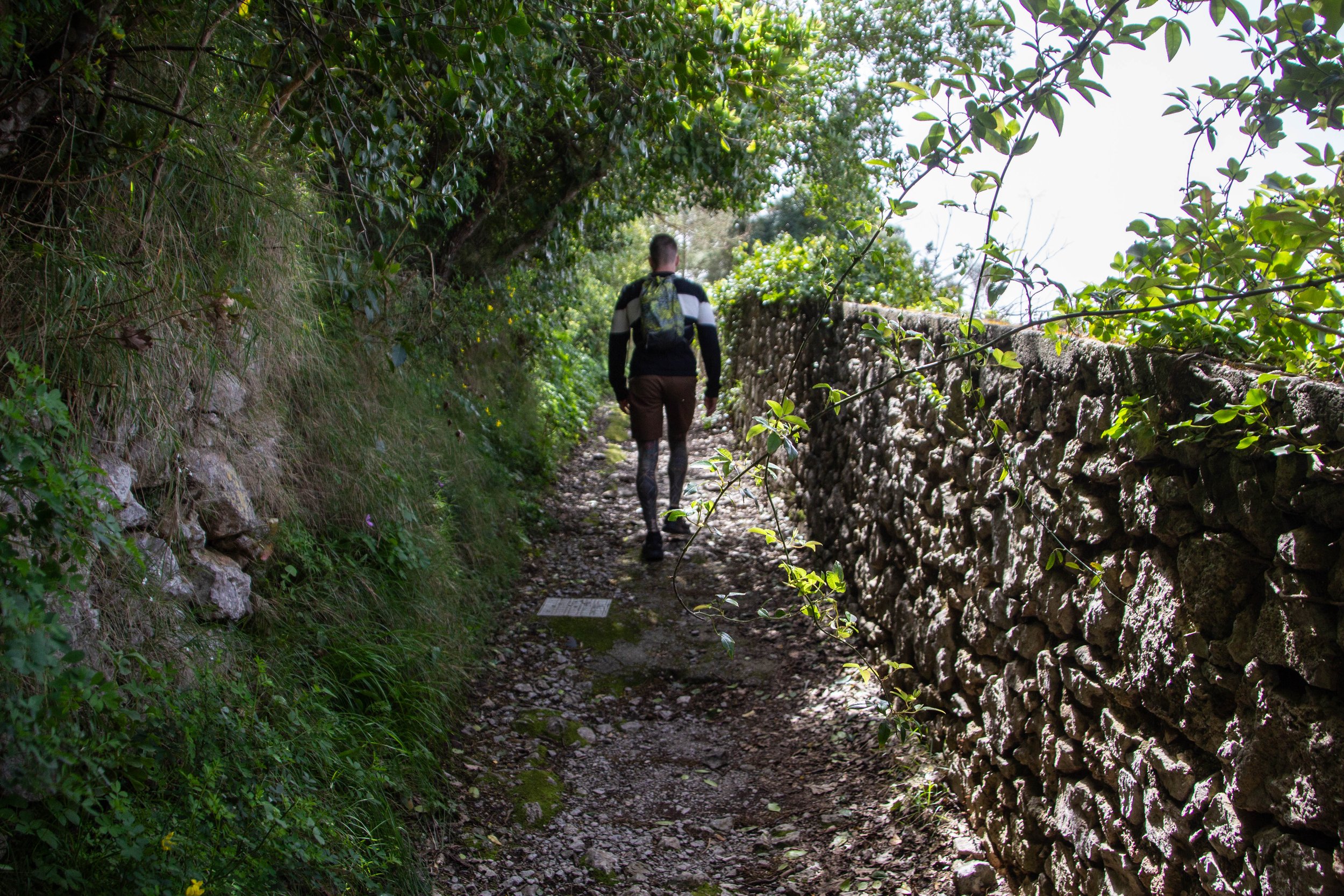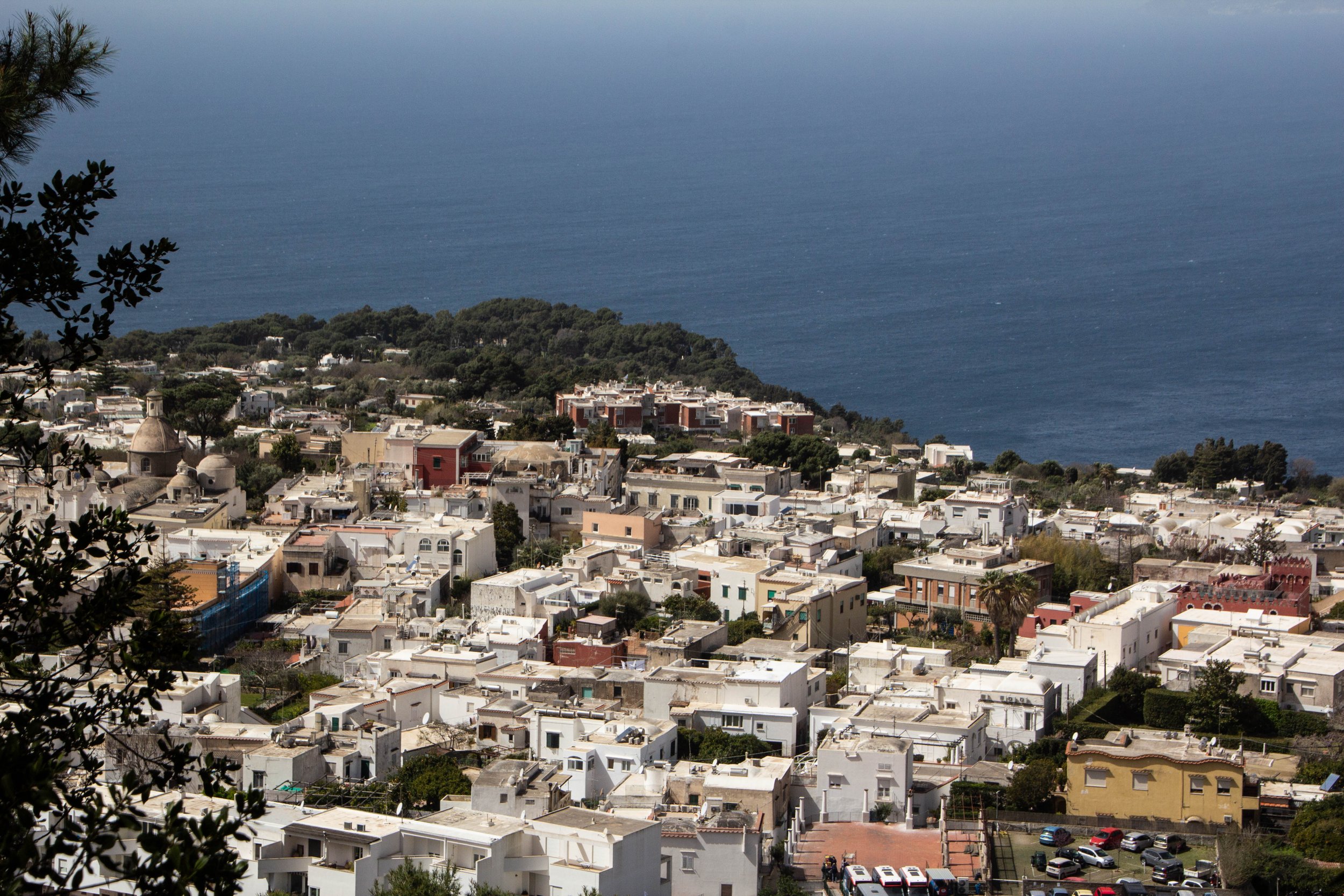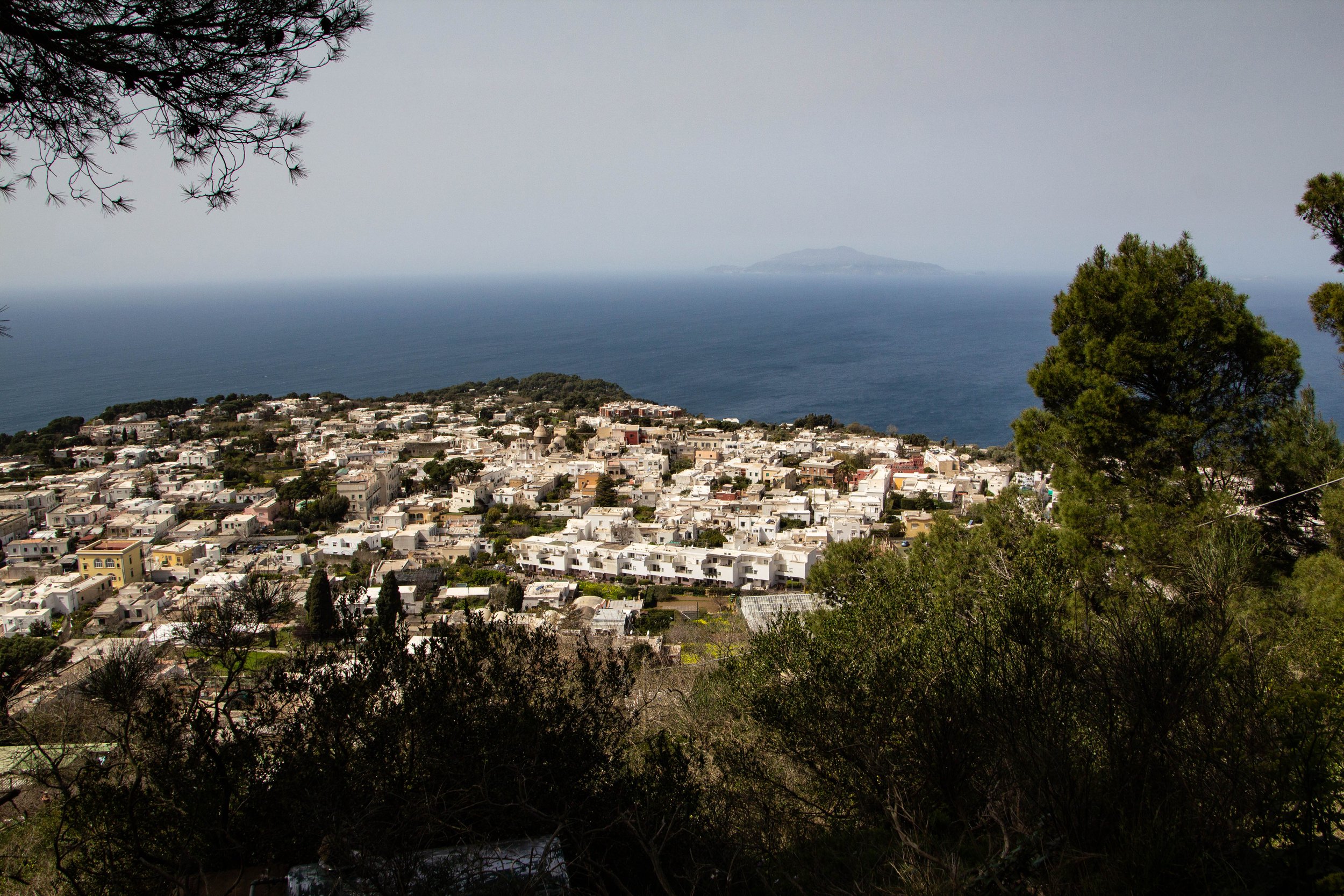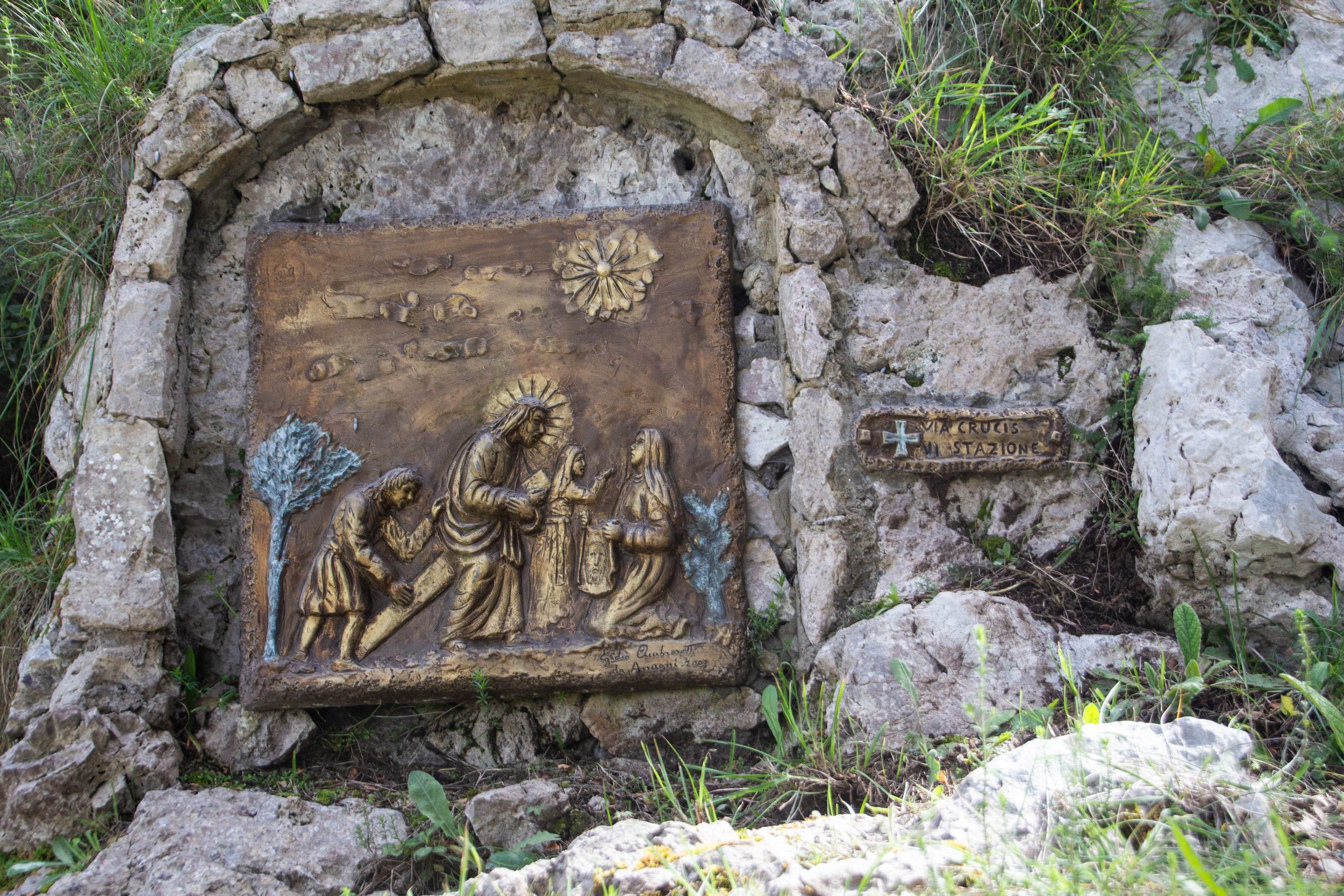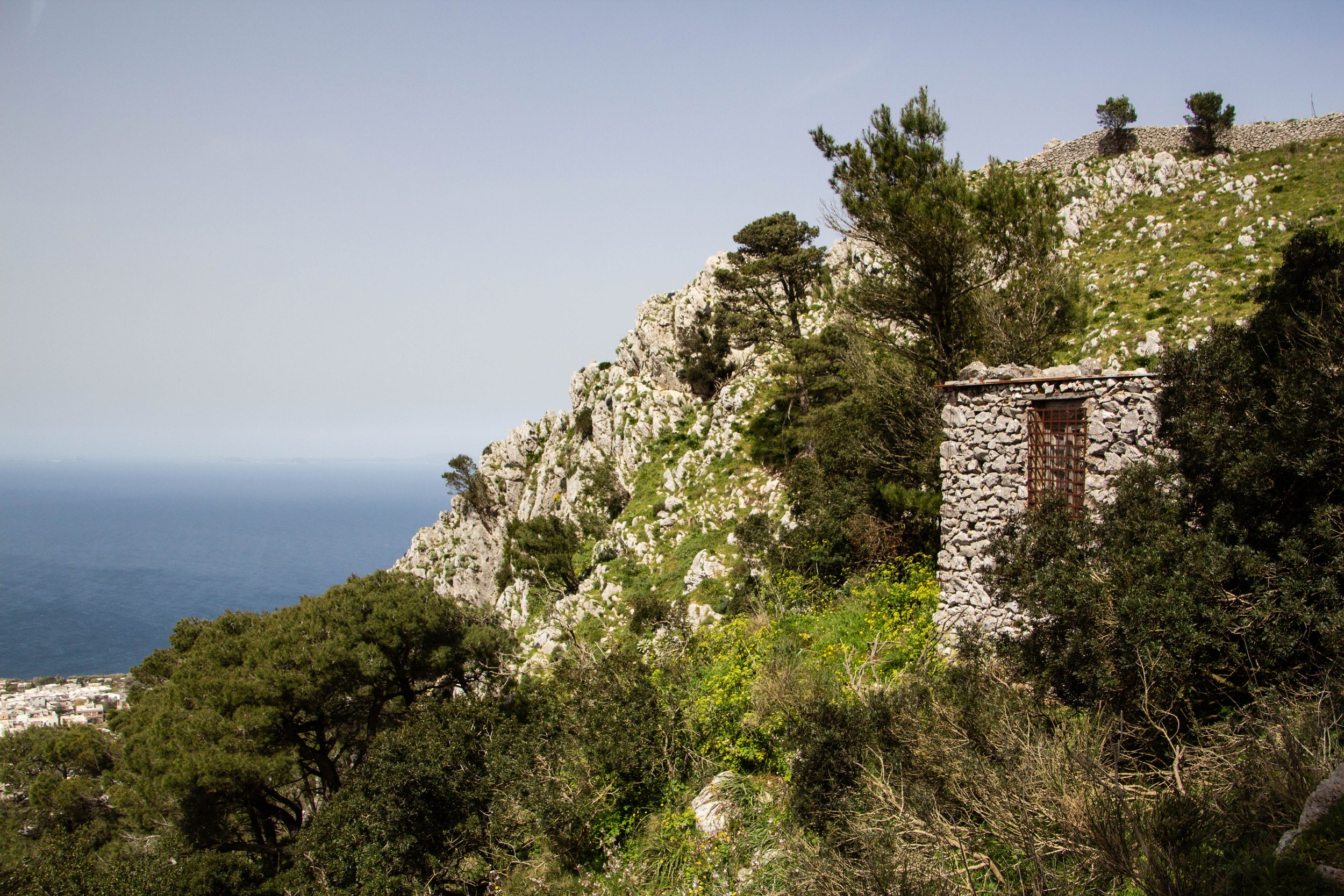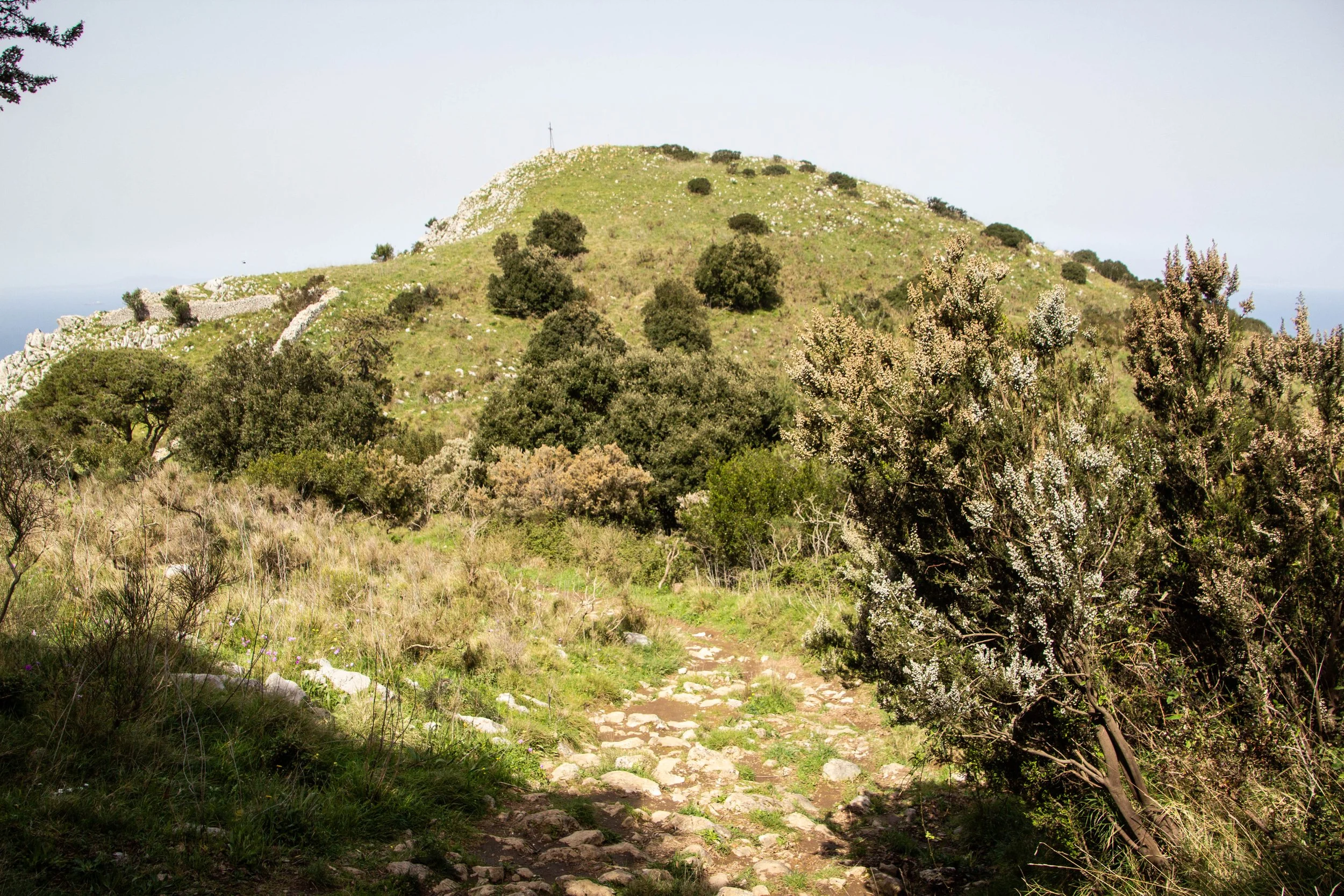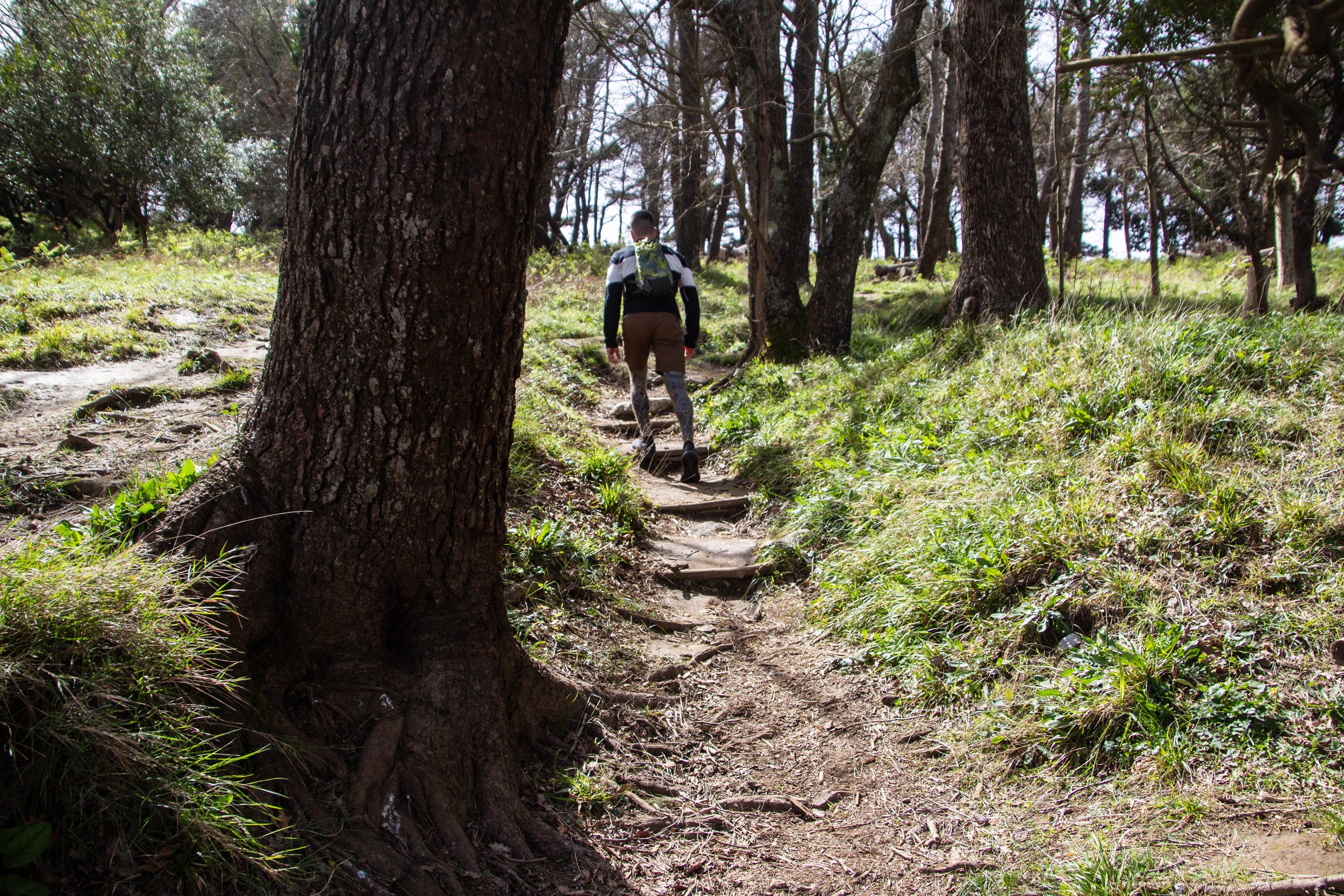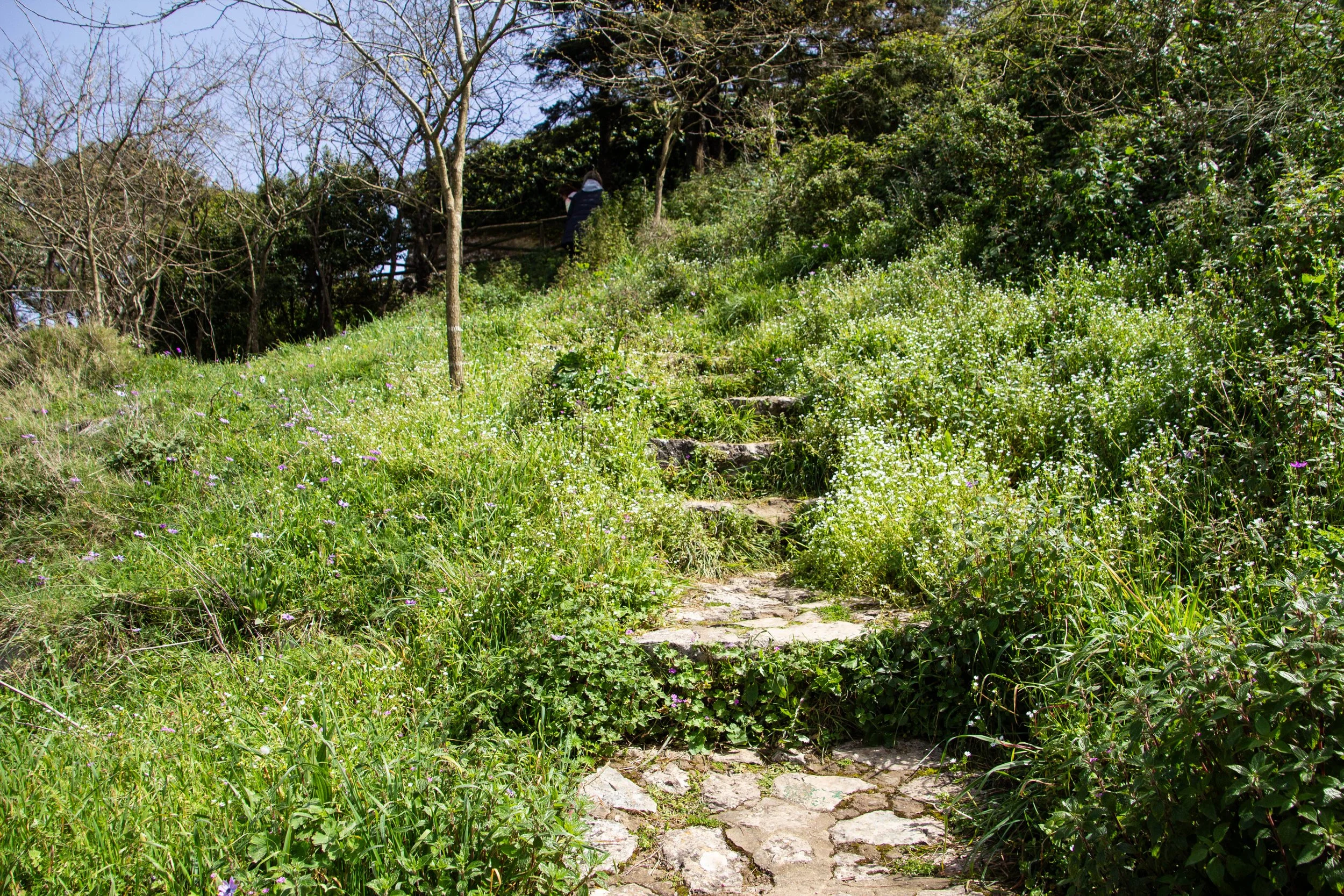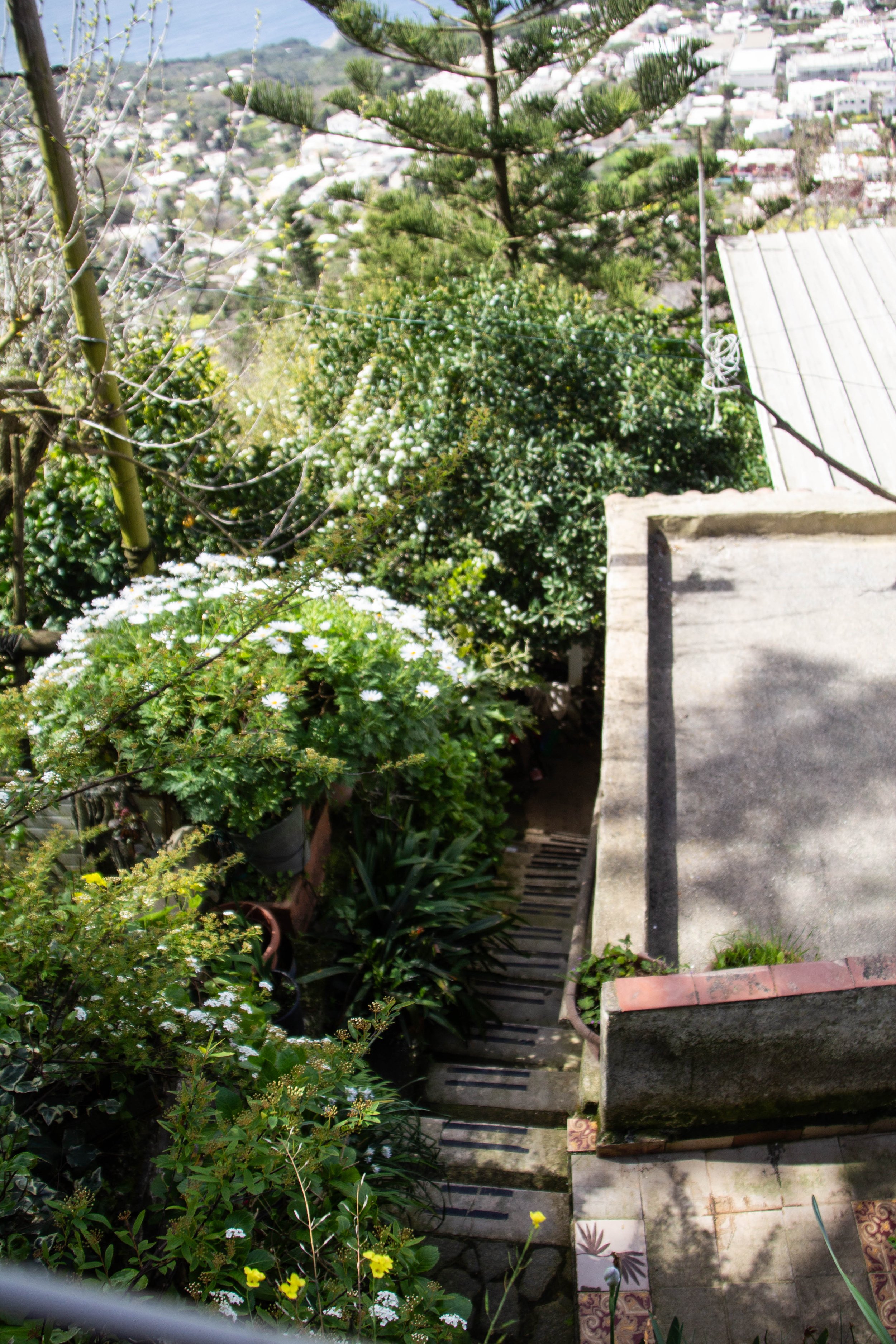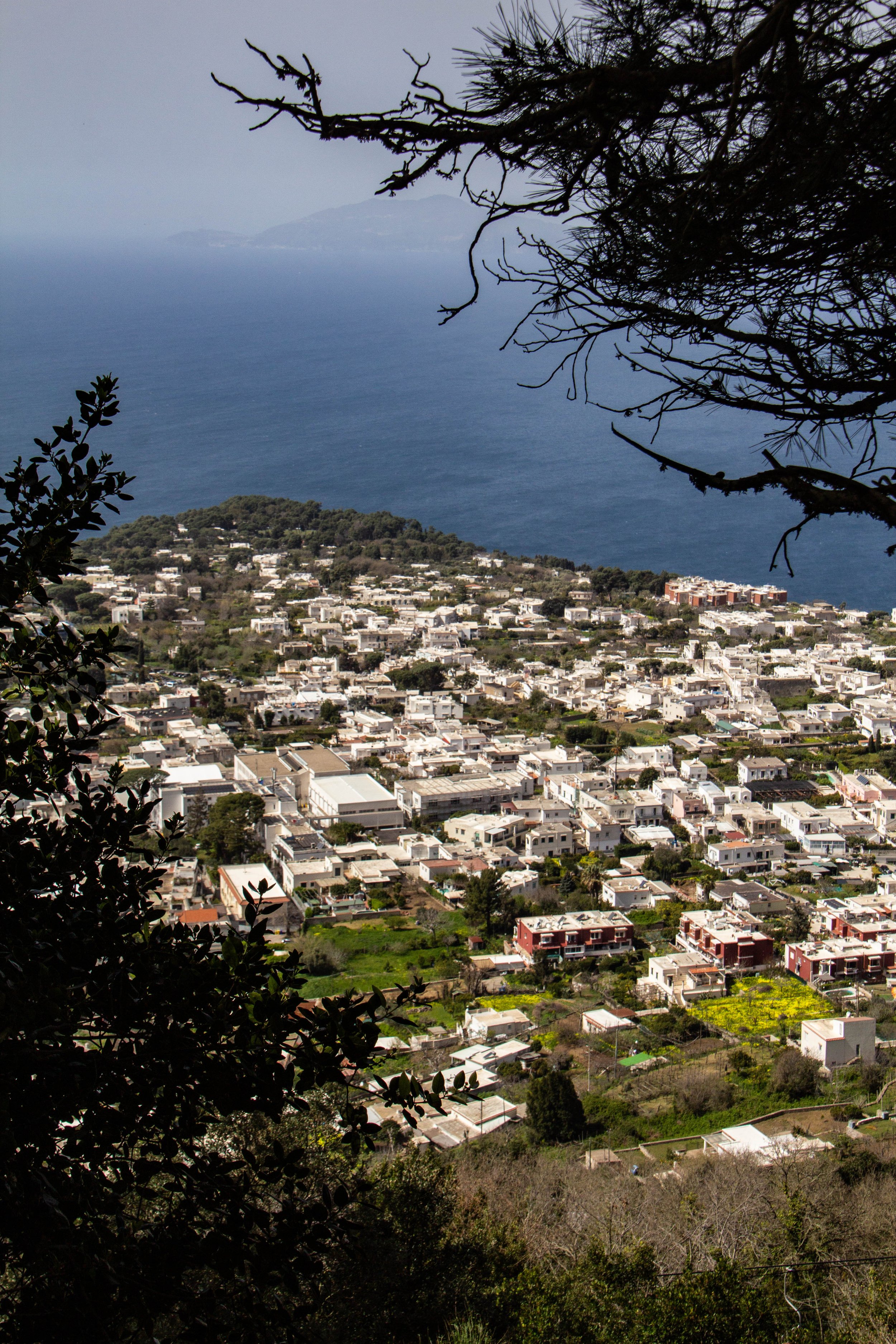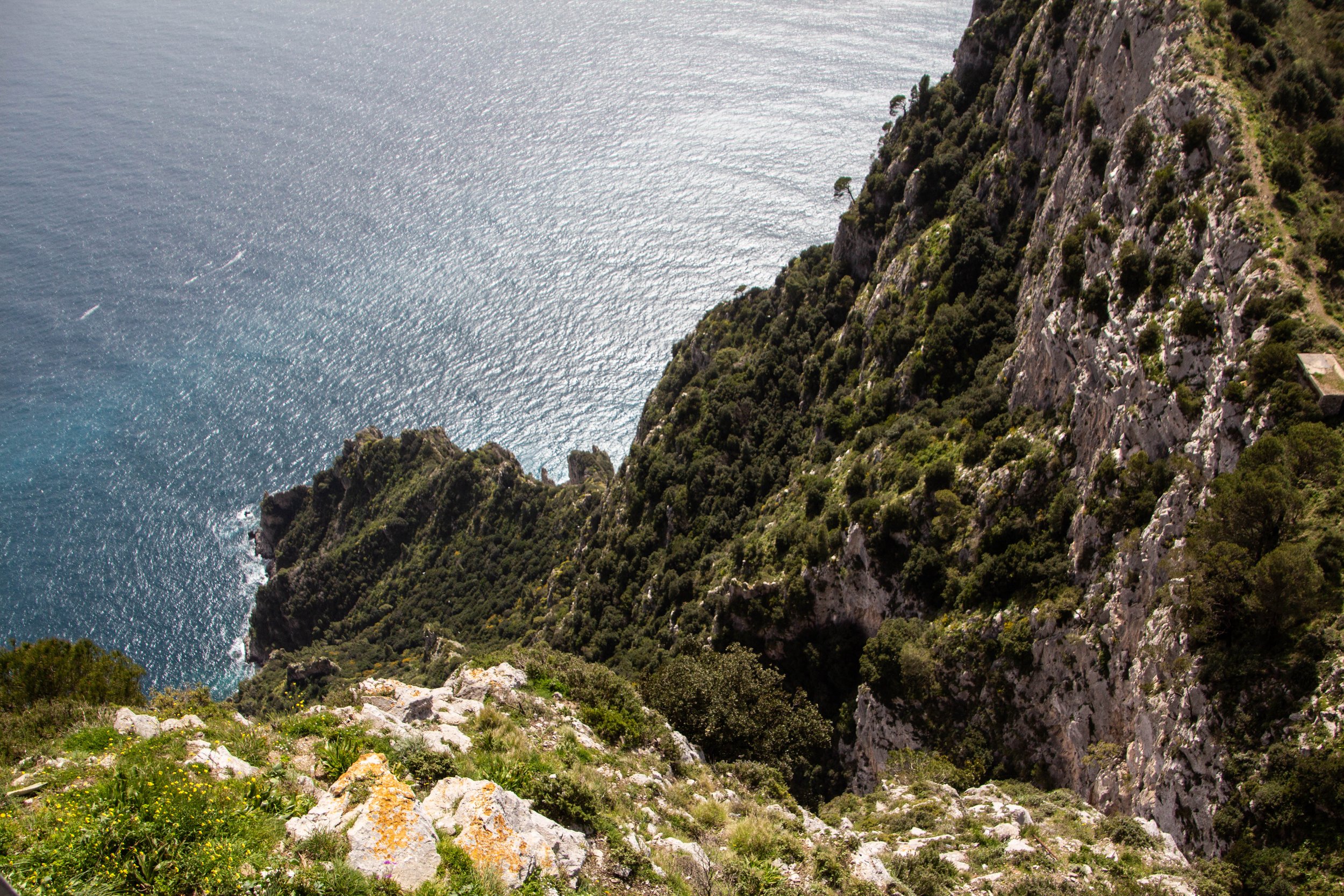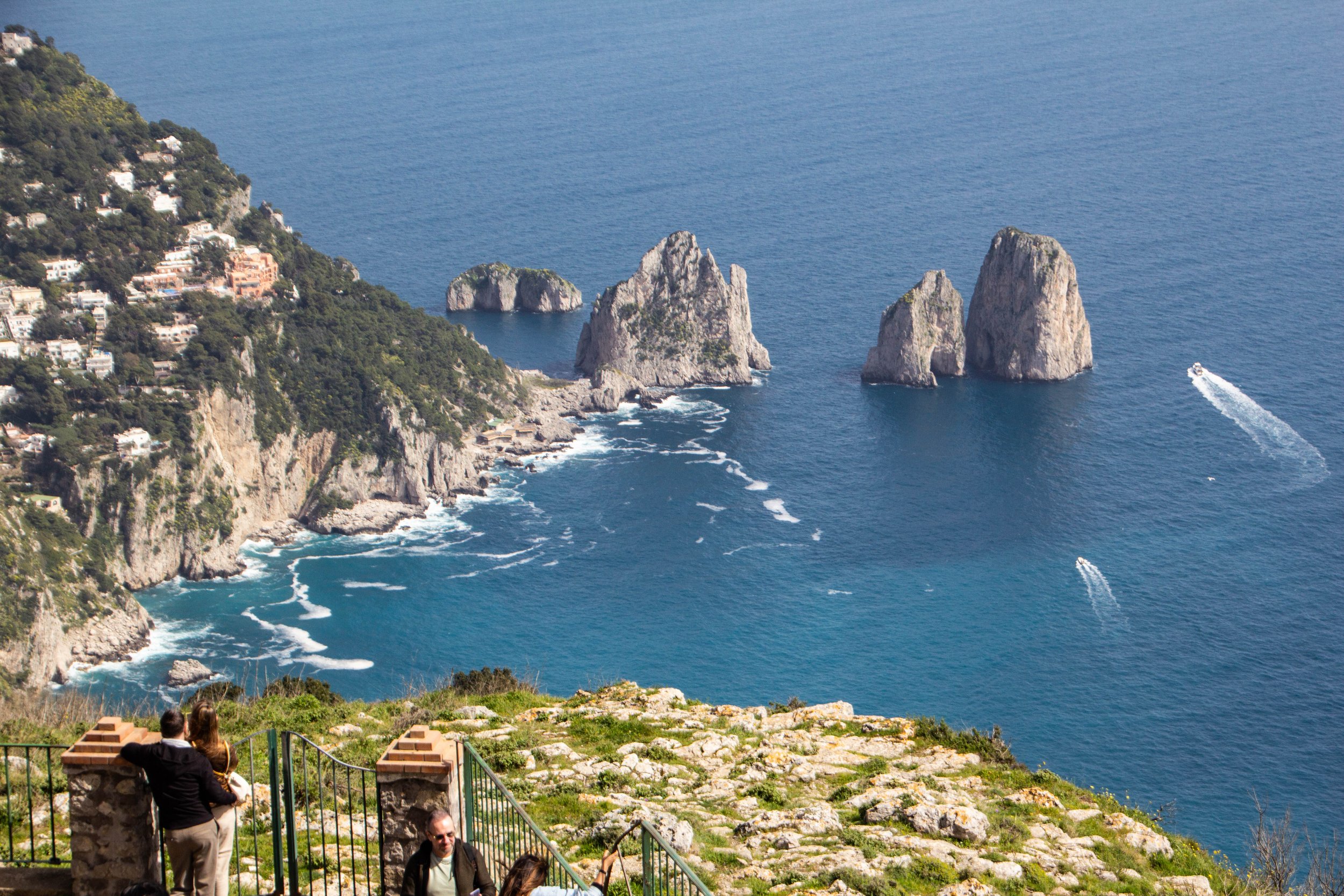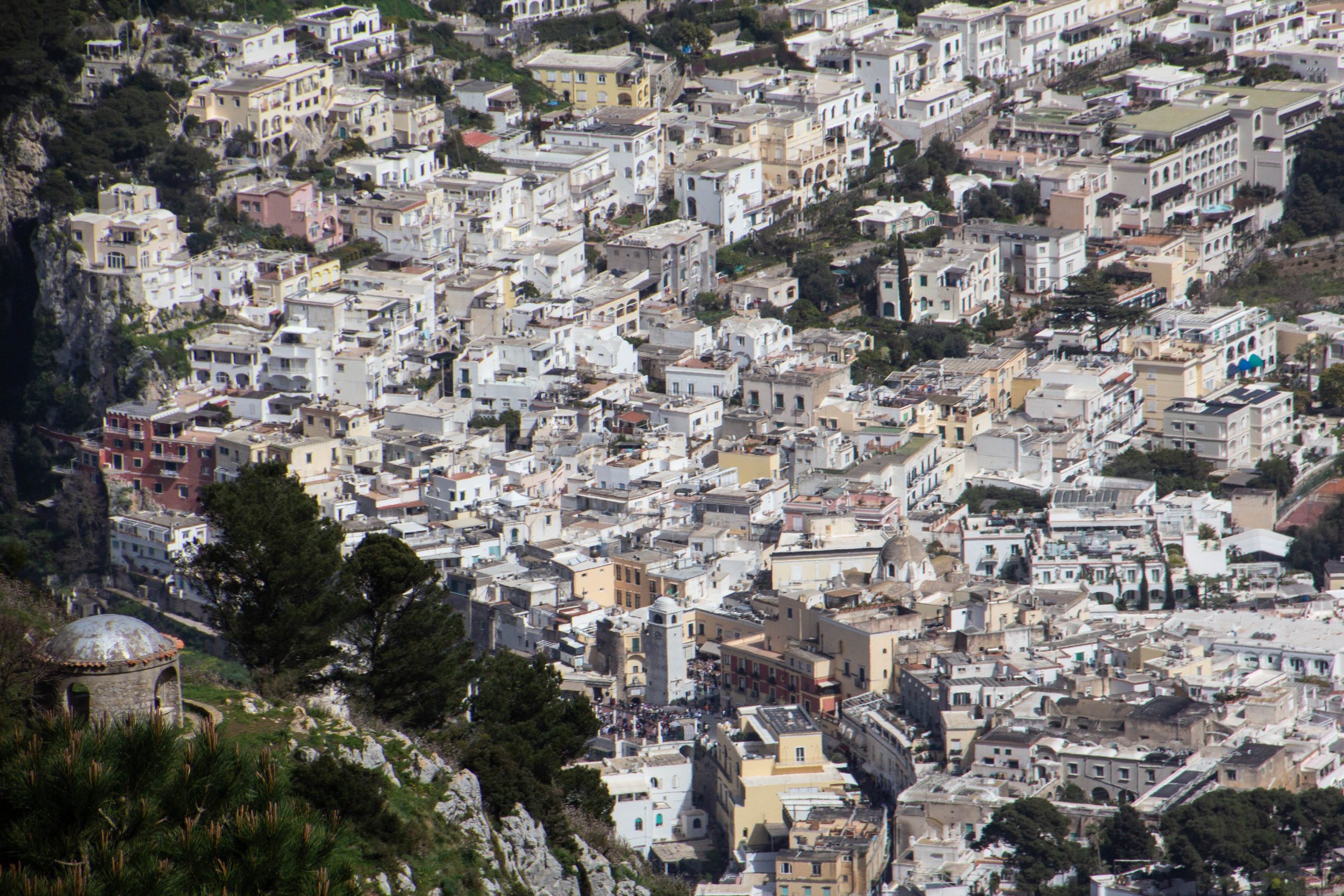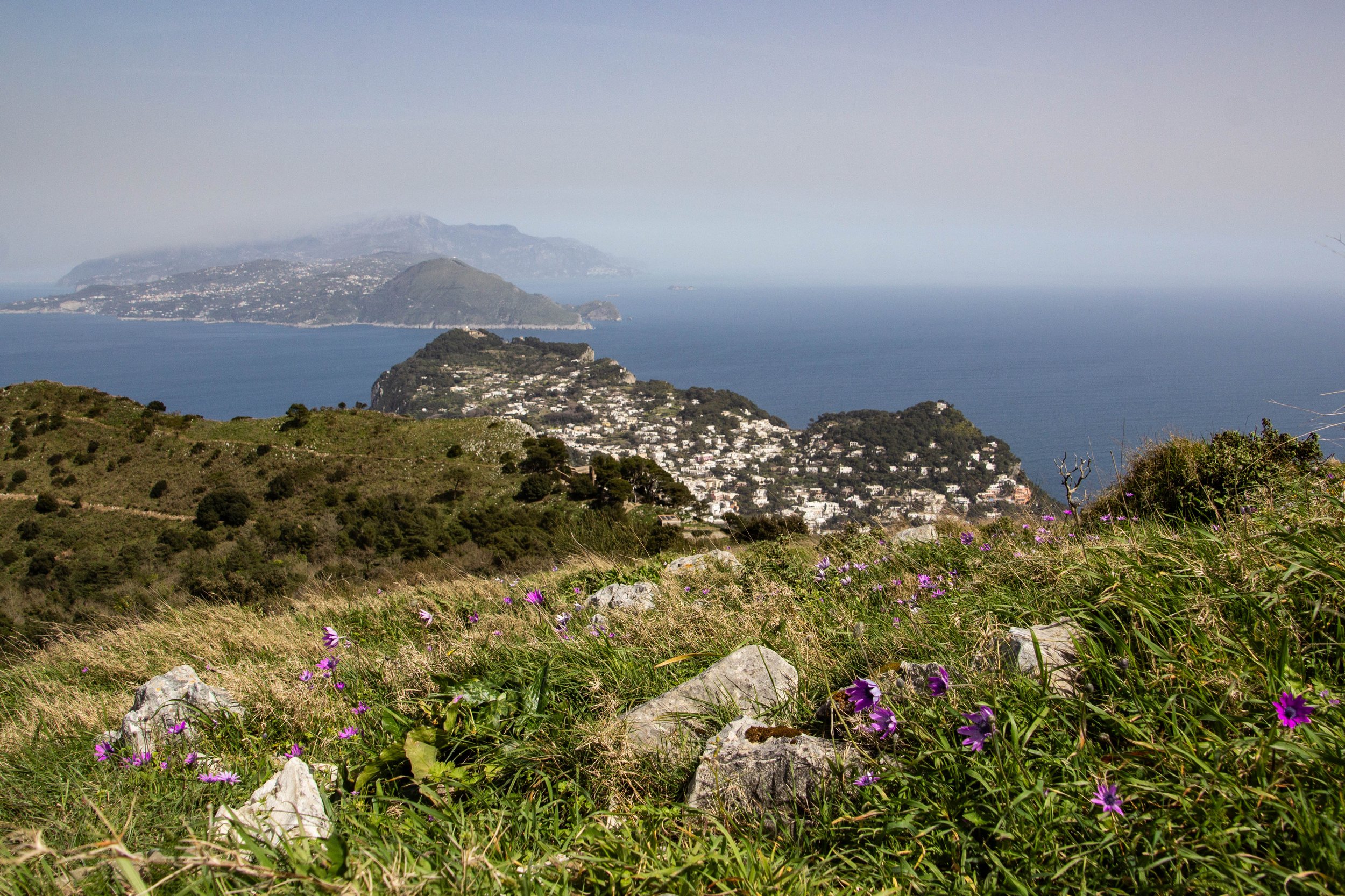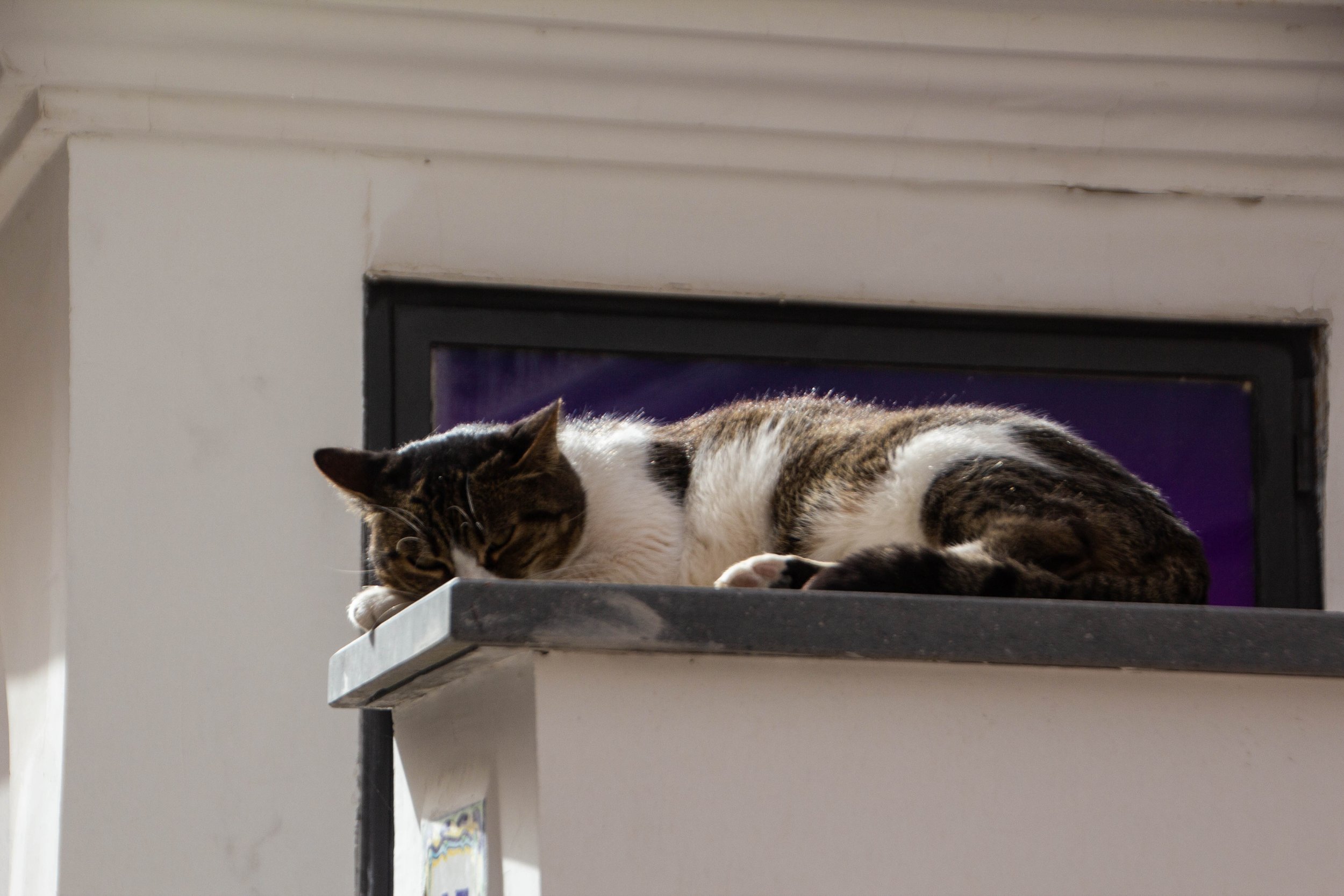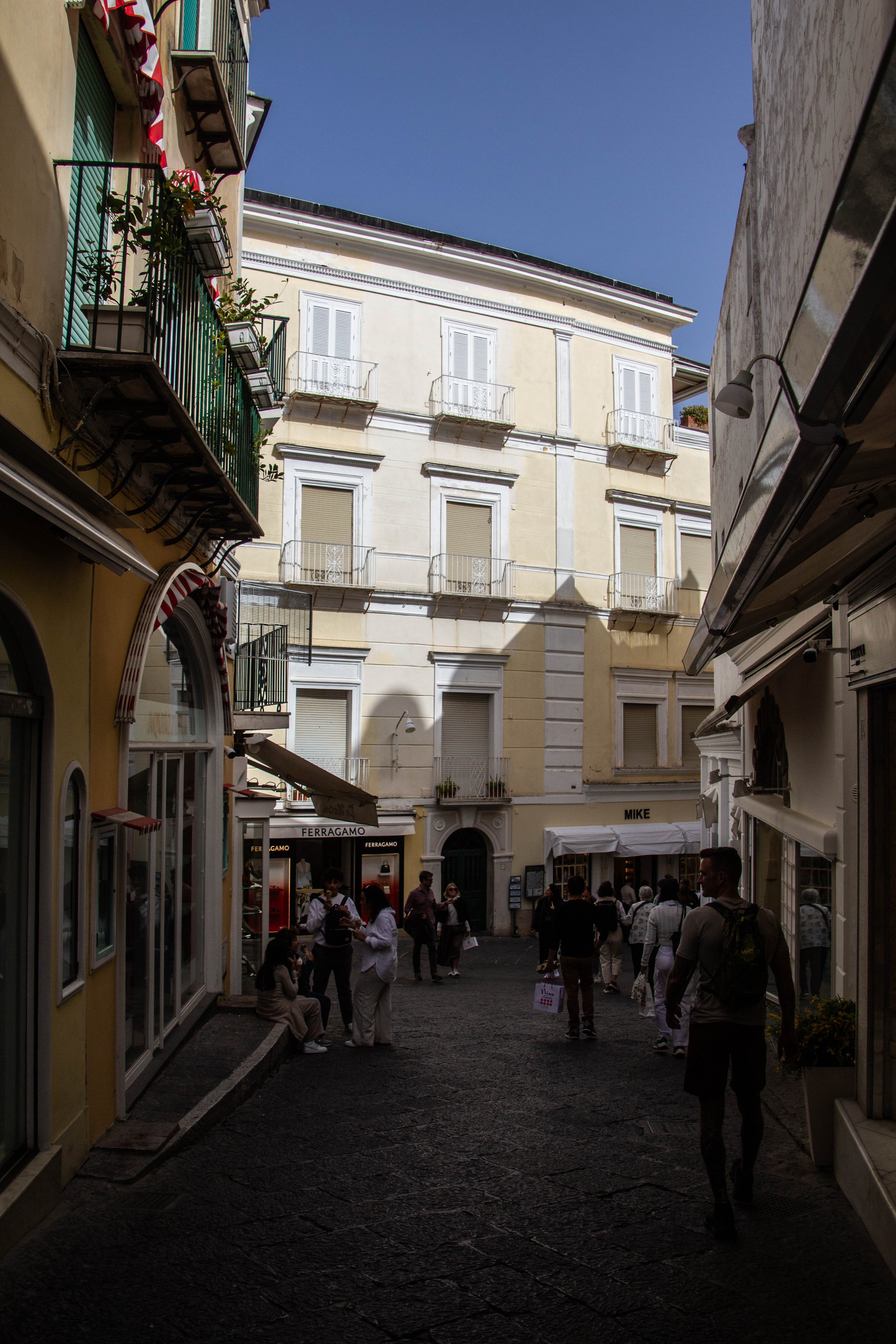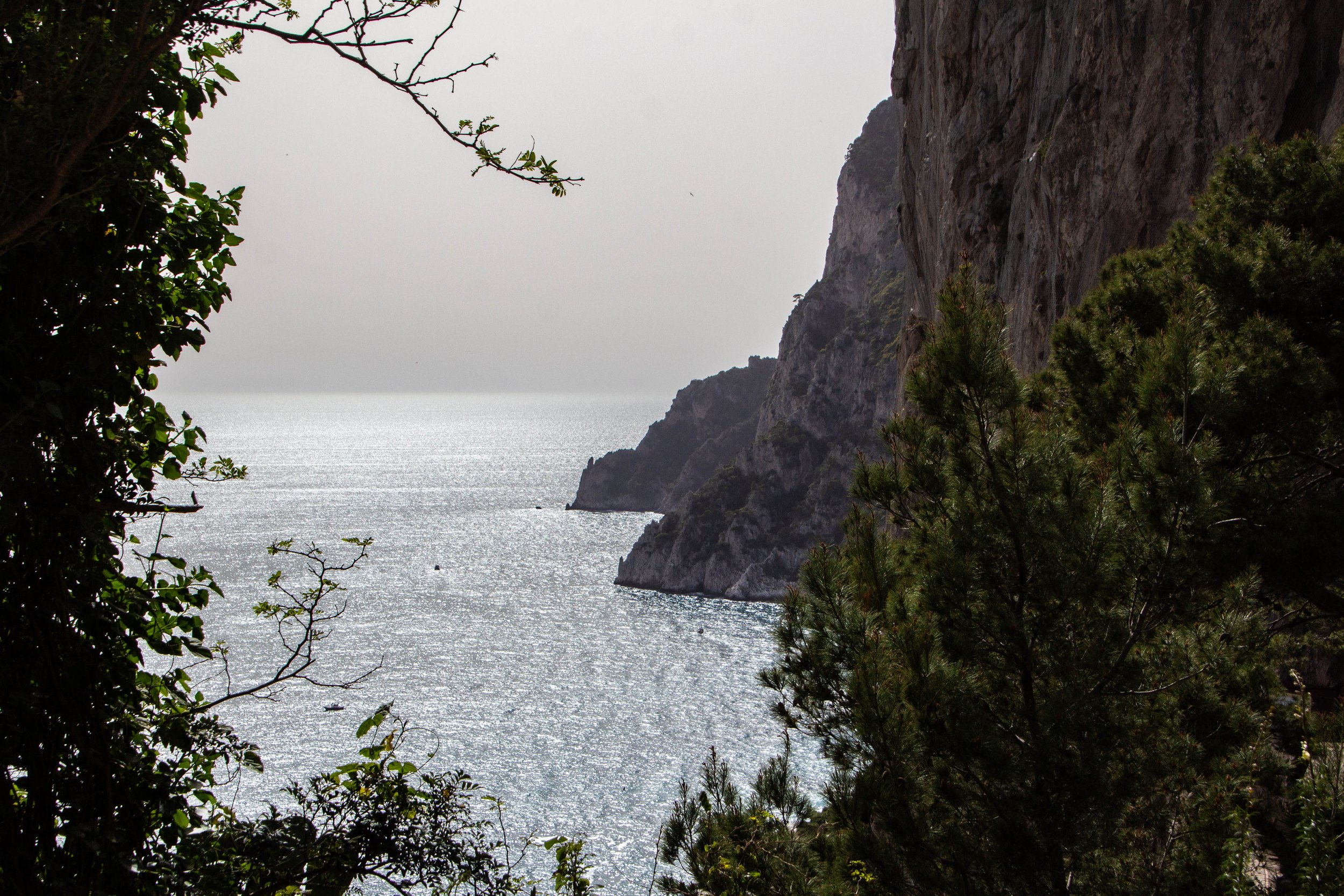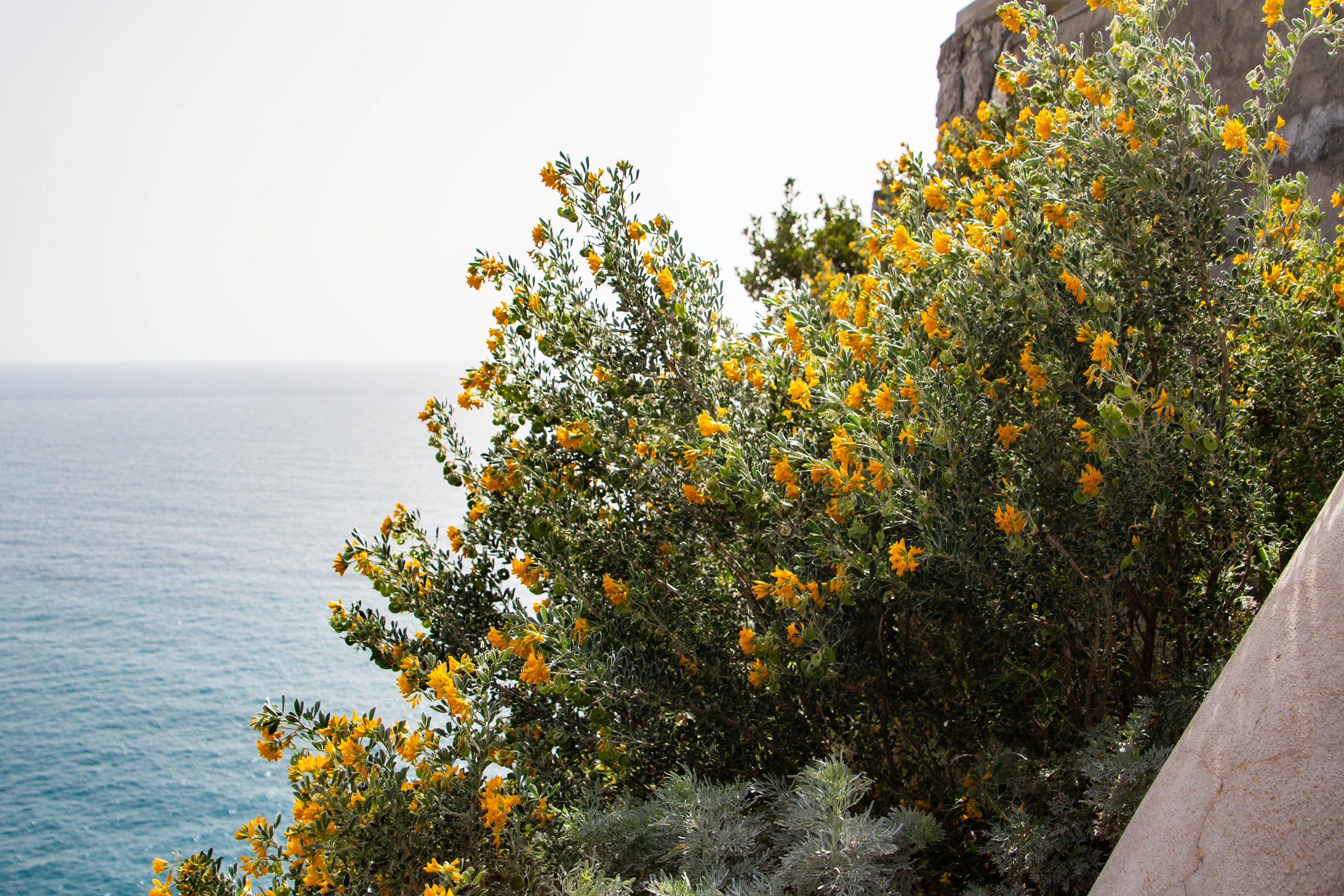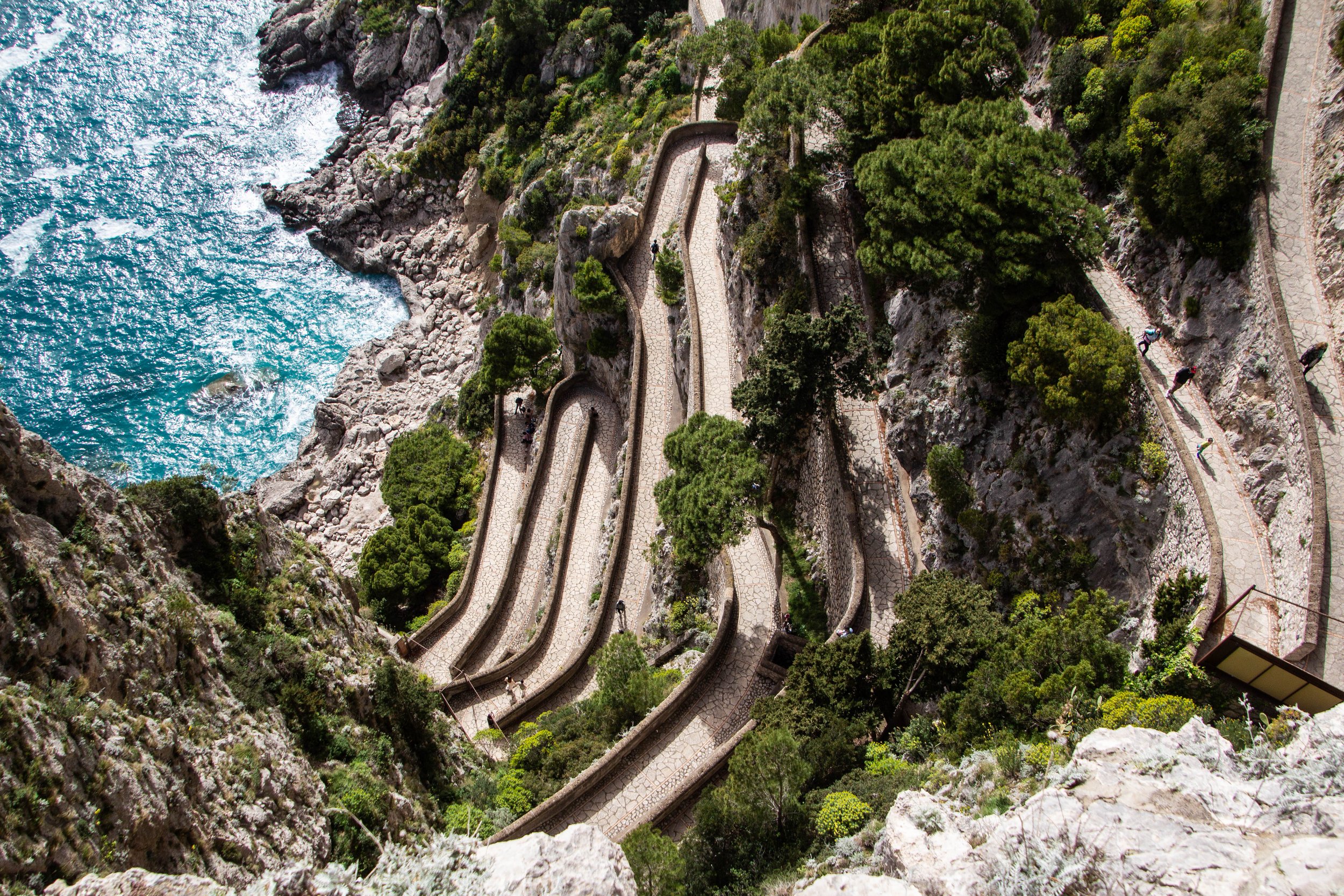Off the Sorrento Peninsula, in the Bay of Naples and the Tyrrhenian Sea, sits the tiny, beautiful island of Capri.
It may seem like the conversion of places into ~tourist destinations~ is something of a recent phenomenon—like in the last 70 years or so—but there are some places in this world that have attracted tourists for much, MUCH longer.
Capri is one of those places.
In fact, it was functioning as a vacation destination as far back as the ROMAN EMPIRE, likely before the birth of Christ. 🤯
We actually don’t even know the origin of the name “Capri.” This idyllic isle just is. It’s eternal; immortal. And it’s also one of the rare places in the world where tourism cannot possibly cheapen the destination; it IS the destination. Here it is on the map. Zoom in. Explore the local geography!
We got an early start so we had time to wander around at the docks in Naples trying to figure out how to catch the ferry. We started with the Naples Ferry Terminal known as Molo Immacolatella Vecchia, as this was supposed to have the cheapest tickets. However, we were struggling to find the office to buy those tickets. We ended up tagging along with an Italian couple who was also struggling to figure this out. Eventually somebody told them (slash us) that we had just missed the public ferry, but that a faster (and more expensive) ferry was departing from the next pier down (Port Naples). The Italian couple chose to wait for the next public ferry, but we chose to run down the road and fork over the €24 each for a 2-way ferry ticket. The public ferry supposedly would have been less than €5, but we didn’t want to wait.
The ferry ride from Naples to Capri took about 1 hour, after which we were docking in Marina Grande. This pretty little harbor front reminded me of some of the small towns I saw in Cinque Terre. The boats floating in the teal blue surf made a lovely first impression.
Whilst on this ferry, we made a potentially stupid decision. There was a woman walking around offering bus tickets around Capri for €25. She explained to us that they had buses departing from both of the main towns on Capri every 15 minutes, so we could explore and we would ride for free for the whole day. She didn’t pressure us, so we decided to take her up on her offer. We hadn’t done much planning, so this pretty much solved our last remaining problem of the day.
As soon as we had paid, we realized that we probably should have Googled whether or not Capri has public transit first. Once the money was gone, I was tempted not to even turn over this rock. But of course I looked, and it turns out that there are reliable public buses running all the time on Capri that cost €2 per trip. We likely would have needed 3 trips that day, so we had potentially just over-paid by €19. The sad part is that this was not our first rodeo, not by a long shot. We just had a moment of laziness.
I walked off the ferry terminal into the beautiful little marina town kind of annoyed, but my frustration melted away when I saw the hoard of tourists descending on the public bus stop. It looked like taking the public bus might have been slightly painful. Meanwhile we were in a moving vehicle within 5 minutes of landing on Capri. In the end I do think this over-priced bus service made our lives easier, so I was able to make peace with the decision relatively quickly. It passed from my consciousness pretty quickly anyway when we began the steep ascent up to the town of Anacapri. The bus took us up a series of switch-back roads until we were driving on the side of a cliff overlooking the the sea and marina. The woman who had sold us the tickets cheerfully called this stretch of road the “Mamma Mia! Road” as we pressed our faces against the glass.
The Town of Anacapri
Besides the little harbor area, there are 2 towns on Capri:
Capri (yes, the town has the same name as the island)
Anacapri
Of the two, Anacapri—being less accessible (re: Mamma Mia!)—is a bit less traveled and less developed, so we were happy to start with it. The prefix “Ana-” actually means “above” in Ancient Greek, which was the language of the first colonizers of this island. This little mountain town would also serve as the basecamp for our hike up the side of Mount Solaro. But I’m getting ahead of myself.
First we spent some time just walking around Anacapri. Although the aerial views of this town that you’ll see later on give the impression that it covers at least a few square blocks, in practice we found that the mountainous terrain only allows enough horizontal space for a couple of main roads. Those roads, however, were quite pretty. The buildings were all painted white, and in every green space yellow flowers bloomed brilliantly, and lemons hung from tree branches. It’s rigorous adherence to this narrow color pallete was really quite striking. Everywhere you look, it’s white buildings, green plants, blue sky and ocean, and pops of yellow everywhere.
And these lemons were FREAKING GINORMOUS. They didn’t even look real. I thought that this must be some sort of gimmick, but everybody assured me that Capri is just known for its massive lemons. Well, it turns out that these are actually NOT lemons; they are an entirely different fruit called citrons. But they look and taste like big lemons.
Hiking Monte Solero
Anacapri—the more mountainous of the two towns on Capri—sits on the slope of Monte Solero. Its peak has an elevation of 589m, which comes straight up from sea-level. By the time you arrive in Anacapri, you’re already half-way up in terms of elevation, and there is a chair lift departing from the main town square that will take you the rest of the way up.
However—in order to attain a sense of superiority—we elected to hike to the top. There are multiple walking paths that take you directly from Anacapri up the mountain. In fact, I’m pretty sure there are no two points that are not connected by walking paths on Capri; this entire island is criss-crossed with old trails. On such a small but long-inhabited and well-traveled island, I doubt there are many pieces of ground left where human feet have not stood.
The hike was a bit steep, but overall not terribly challenging. It probably took us about an hour to get to the top, which—after you counter-balance our relatively fast past with my incessant need to stop and take pictures—is probably about average. Here’s the AllTrails link. And I just realized that you can embed these things as well? That is awesome. Expect more AllTrails embeds in future articles.
It was a really lovely hike. The views of Anacapri set against the backdrop of the sea were, of course, stunning. But to me, the highlight was in the details. It was the brightly colored flowers blowing in the breeze on the mountainside, and the scattered religious shrines carved into the stone that stuck out to me. It reminded me of hiking to the overlook of Taormina (Sicily) a few years ago; this was a gorgeous hike, but what I remember most are the silhouettes of the plants against the Sicilian sunset, and the cat that befriended us at the top. Similarly, on Capri, despite the beautiful views off in the distance, I found the path itself that was unfolding before me to be even more engaging.
As we approached the top, the chairlift came into view, and we basked in our false sense of superiority.
Just kidding. No shame in taking the chair lift. Whatever you do on Capri, just make sure that you get yourself to the top of Monte Solaro one way or another, because the views up here do not disappoint. Looking down over the western side of the island, there is a dizzying drop. In fact, there is a lookout point that allows you to look straight down over the entire 589m drop. The wind up there can be a bit scary. But as pretty as this was, it was actually the less scenic side of the island.
A short walk over to the eastern side of the peak, which faces back toward the Sorrento Peninsula and mainland Italy, reveals a STUNNING view down over the town of Capri. That is the cover photo of this article. The Roman statue up here is incredibly picturesque with the tiny islets and circling boats dotting the water below.
Naturally, we wanted to edge a bit closer to this view, so we quickly found ourselves scrambling down the steep, windswept meadow up here toward the town of Capri nestled far below. It wasn’t long before our off-roading landed us in some bramble, but we were able to push through and find our way back to one of the many aforementioned foot trails. However, a German couple had unwitting followed us, thinking that we must know where we were going (we did not). Eventually the girl called to me to ask if we knew where we were going. I told her we didn’t, but seeing as we were already deep in the foliage, they must have felt committed by that point. Once we found the trail, we waited for them to emerge as well just to make sure we hadn’t led them to their doom. Thankfully, they appeared unscathed a few minutes later. From there we found our way back to the main trail and headed back down to Anacapri.
The Town Of Capri
We hopped onto our expensive bus, and buckled in for a ride back down the “Mama Mia Road.” It wasn’t long before that bus deposited us in a parking lot just outside of Capri.
We walked a few paces up into the town and quickly discovered it to be much more developed and upscale than Anacapri. There were high-end clothing shops and luxury hotels all over the place. The store fronts—like Anacapri—were largely painted white, conjuring images of the Greek Islands. In the afternoon heat, a cat lay in a beam of sunlight, lazily soaking in the adoring stares of passing visitors.
Following the main road through Capri, we eventually stumbled upon Giardini di Augusto (in English, “Gardens of Augustus”). We initially walked past this in favor of a stroll down a street called Via Krupp, which is a walking path full of hairpin turns that descends about 100m to the sea level below. There are impressive metal nets draped over the rock faces that tower over this path to prevent dangerous rockfalls.
Krupp, if you hadn’t already guessed, is not an Italian word. It’s actually the surname of a German industrialist, Friedrich Alfred Krupp, who was living here at the turn of the 20th century. It provided an easy passage between the town of Capri and a small beach area at the bottom of what would have then been a cliff. So I believe that Via Krupp was a welcome addition to the town, but this contribution quickly ended in scandal, when Krupp was discovered to be using the path primarily for sex stuff with young girls on the island. He was, apparently, “asked to leave Italy” in 1902. But he left this nice foot path behind!
Giardini di Augusto
Instead of undertaking yet another steep hike up and down Via Krupp, we instead opted to shell out the €5 for entry into Giardini di Augusto. The garden was fine, but we were really just there for the views. It affords a beautiful view of the cliffs and the ocean, as well as an over-head angle of the switch-back turns of Via Krupp.
I love that teal color you see in these places when the sun catches the water on the Italian seaside. I took very similar photos almost 10 years ago in my first trip to Italy when I visited Cinque Terre up in Liguria.
I also love the picture I got of the 4 old people sitting on the bench together. I found myself wondering what their connection was. I imagined that they were old friends who had known each other since childhood. I even considered approaching them and asking for an email address where I could send the photo. But I didn’t. Oh well. 🤷🏻♂️
After a tiring day on Capri, it was time for some rest. We found a table at a restaurant in the main square of Capri—Piazza Umberto I—and I endeavored to FINALLY have something with lemon. I was parched, and the giant lemons—er, sorry, citrons—all over the island had been calling my name.
I ordered sparkling water with a lemon wedge, and a couple scoops of lemon gelato.
In the afterglow of what had been a beautiful but somewhat sweaty day, this little treat was like an oasis in the desert; easily one of the most refreshing things I have every experienced.
We sat soaking in the Caprese ambience for a while, before finally taking our final ride in the expensive bus down to the Marina, and catching a ferry back to Napoli.
The city of Naples—despite its stunning surroundings—is not exactly known for its beauty or charm within Italy. We discussed this at length in the previous article. However, I made a conscious choice in planning this trip that I wanted to save the postcard destinations like Postiano and Amafli for some romantic vacation ❤️ at a later date. Capri was, therefore, the only exposure we were going to get to the “vacation paradise” that surrounds Naples on this trip. It certainly lived up to the hype, but it also cast urban Naples in a comparatively unfavorable light. However, I stand by my love for Napoli. It’s definitely rough around the edges, but damn if it’s not intoxicating.
Up next, we go deeper into Naples!
Track of the Day ⏯
Full Playlist 🎧
About The Author 👋
Peter was born & raised in Columbus, Ohio and started this blog when he moved from Boston to Hanoi (Vietnam) in 2014. After years based in Nashville working on his band, The Great Palumbo, he now resides in London, UK.








